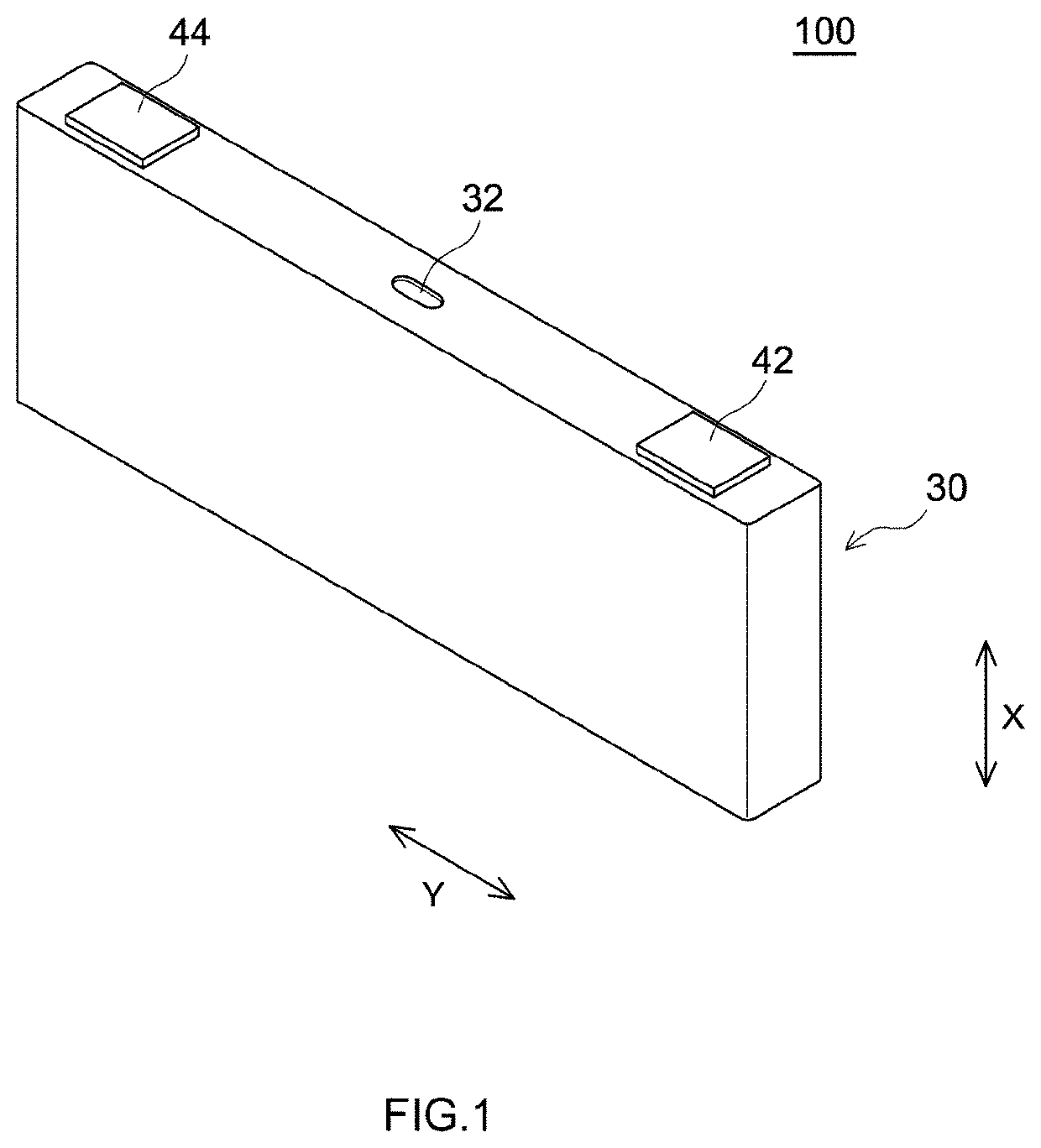Secondary battery electrode and nonaqueous electrolyte secondary battery including the same
a secondary battery and secondary battery technology, applied in the manufacturing process of electrodes, cell components, electrochemical generators, etc., can solve the problems of decreased volumetric efficiency of secondary batteries and unsatisfactory target energy amounts, and achieve the effect of increasing durability and volumetric efficiency of secondary batteries
- Summary
- Abstract
- Description
- Claims
- Application Information
AI Technical Summary
Benefits of technology
Problems solved by technology
Method used
Image
Examples
example 1
[0064]First, LiMn2O4 as a positive electrode active material, acetylene black (AB) as a conductive material, and polyvinylidene fluoride (PVdF) as a binder were mixed with N-methylpyrrolidone (NMP) as a solvent by using a planetary mixer such that the mass ratio of these materials was 92:4:4, thereby preparing a positive electrode active material layer paste. Next, rectangular aluminium foil as a positive electrode current collector was prepared. The positive electrode active material layer paste was applied onto both surfaces of a positive electrode current collector (aluminium foil) with a die coater, and dried, thereby producing a positive electrode sheet. The application of the paste was performed along the long-side direction of the positive electrode current collector except for an uncoated portion where the positive electrode active material layer was not provided on an end portion of the long-side direction of the current collector. The positive electrode active material lay...
examples 2 to 7
[0066]The viscosity and conveyance speed of the positive electrode active material layer paste were adjusted such that the length L1 of the positive electrode active material layer in the long-side direction was 300 mm and the length L2 from the uncoated portion to the point P is the lengths shown in Table 1. Except for this, positive electrode sheets of Example 2 to 7 were fabricated in the same manner as Example 1.
[0067]Specifically, in Example 2, the viscosity of the positive electrode active material layer paste was adjusted to 33000 mPa·s, and the conveyance speed thereof was adjusted to 0.5 m / min.
[0068]In Example 3, the viscosity of the positive electrode active material layer paste was adjusted to 30000 mPa·s, and the conveyance speed thereof was adjusted to 0.7 m / min.
[0069]In Example 4, thereof was adjusted to 20000 mPa·s, and the conveyance speed thereof was adjusted to 1.5 m / min.
[0070]In Example 5, the viscosity of the positive electrode active material layer paste was adj...
examples 11 to 17 and examples 21 to 27
[0073]The viscosity and conveyance speed of the positive electrode active material layer paste were adjusted such that the length L1 of the positive electrode active material layer in the long-side direction was 625 mm and the length L2 from the uncoated portion to the point P is the lengths shown in Table 1. Except for this, positive electrode sheets of Example 11 to 17 were fabricated in the same manner as Example 1. The viscosity and conveyance speed of the positive electrode active material layer paste were adjusted such that the length L1 of the positive electrode active material layer in the long-side direction was 1400 mm and the length L2 from the uncoated portion to the point P is the lengths shown in Table 1. Except for this, positive electrode sheets of Example 21 to 27 were fabricated in the same manner as Example 1.
[0074]Specifically, Examples 11 and 21, the viscosity of the positive electrode active material layer paste was adjusted to 35000 mPa·s, and the conveyance s...
PUM
| Property | Measurement | Unit |
|---|---|---|
| length L1 | aaaaa | aaaaa |
| thickness t1 | aaaaa | aaaaa |
| length | aaaaa | aaaaa |
Abstract
Description
Claims
Application Information
 Login to View More
Login to View More - R&D
- Intellectual Property
- Life Sciences
- Materials
- Tech Scout
- Unparalleled Data Quality
- Higher Quality Content
- 60% Fewer Hallucinations
Browse by: Latest US Patents, China's latest patents, Technical Efficacy Thesaurus, Application Domain, Technology Topic, Popular Technical Reports.
© 2025 PatSnap. All rights reserved.Legal|Privacy policy|Modern Slavery Act Transparency Statement|Sitemap|About US| Contact US: help@patsnap.com



